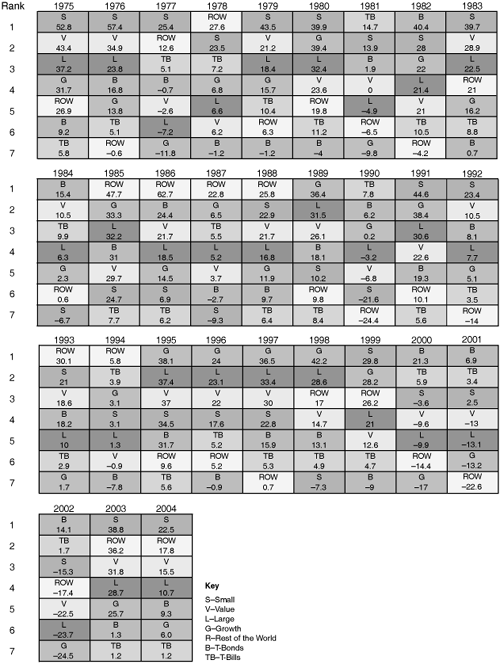Chapter 6. To Start, a Benchmark
Here’s what we know: Fiscal and monetary policies produce shifts in the economy’s aggregate demand and supply. Depending on the nature of the shifts, a new and temporary economic environment is created as the economy returns to a new equilibrium. Along the way, the inflation rate and gross domestic product (GDP) growth rate change in predictable patterns. According to the data reported in the previous chapters, so do the patterns of asset returns (see Table 6.1). The latter is giving rise to cyclical asset allocation (CAA).

Figure 6.1. Periodic table of asset returns.[*]
But before we can apply a CAA strategy, we need ...
Get Understanding Asset Allocation: An Intuitive Approach to Maximizing Your Portfolio now with the O’Reilly learning platform.
O’Reilly members experience books, live events, courses curated by job role, and more from O’Reilly and nearly 200 top publishers.

